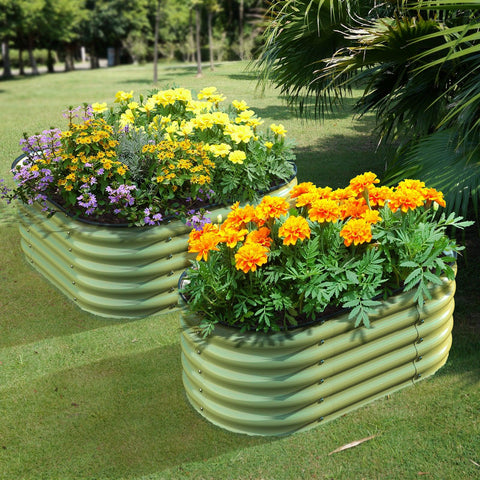Soil Depth Of Raised Garden Beds
There are many reasons to create raised garden beds in a landscape or garden. Raised garden beds are a simple way to deal with poor soil conditions, such as rock, chalk, clay, or compacted soil. They are also solutions for limited garden space or for adding height and texture to a flat courtyard. Raised garden beds can help prevent pests such as rabbits. They also make it easy for gardeners with disabilities or mobility impairments to use their beds. The amount of soil in the raised garden bed depends on the height of the bed and the soil to be planted. Read on for more information on the soil depth of the raised garden bed.

On the soil depth of the raised garden beds
Raised garden beds can be framed or non framed. The frameless raised garden bed is often referred to as a berm, just a garden bed made of soil piled up by soil. These are usually created for ornamental beds, not fruit or vegetable gardens. The soil depth of the frameless raised garden bed depends on the plants to be planted, the soil conditions under the berm, and the desired aesthetic effect.
Trees, shrubs, ornamental grasses, and perennials can have roots between 6 inches (15 centimeters) and 15 feet (5 meters) or more deep. Cultivating the soil under any raised garden bed will loosen it so that the plant roots can reach the depth required for proper nutrient and water absorption. In places where the soil quality is too poor to cultivate or loosen, raised garden beds or berms need to be built higher, leading to the need to introduce more soil.
Depth to fill the raised garden bed
The frame raised garden bed is often used for vegetable gardening. The most common depth of a raised garden bed is 11 inches (28 cm), because these are two 2 × Height of 6 inch board, usually used for frame raised garden bed. Then fill the raised garden bed with soil and compost just a few inches (8 cm) below its edge. Some disadvantages of this approach are that although many vegetable plants need a depth of 12 to 24 inches (31 to 61 cm) to develop their roots well, rabbits can still enter beds less than 2 feet (61 cm) high, while gardens 11 inches (28 cm) high still require a lot of bending, kneeling and squatting gardeners.

If the soil below the raised garden bed is not suitable for the plant roots, the bed should be created high enough to accommodate the plants. The following plants can have 12 to 18 inch (31-46 cm) roots:
Sesame
Broccoli
Cabbage
Chinese cabbage
Cauliflower
Celery
Corn
Leek
Garlic
a turnip
Romaine lettuce
Onion
Radish
Spinach
Strawberry
Root depth should be 18 to 24 inches (46-61 cm):
Bean
Beet
Muskmelon
Carrot
Cucumber
Eggplant
Cabbage
Peas
Pepper
Pumpkin
Radish
Potato
Then those with deeper roots, 24 to 36 inches (61 to 91 centimeters). These may include:
Artichoke
Asparagus
Okra
Parsnip
Pumpkin
Chinese rhubarb
Sweet potato
Tomatoes
Watermelon

Determine the soil type of the raised garden bed. Bulk soil is most often sold in yards. To calculate how many yards it takes to fill a raised garden bed, measure the length, width, and depth of the bed in feet (you can convert them to feet by dividing them by 12). Multiply by length x width x depth. Then divide that number by 27, which is how many cubic feet are in a yard of soil. The answer is how many yards of soil you need.
Keep in mind that you will most likely want to mix compost or other organic matter with regular topsoil. In addition, fill the raised garden bed a few inches (8 cm) below the edge to make room for mulch or straw.
